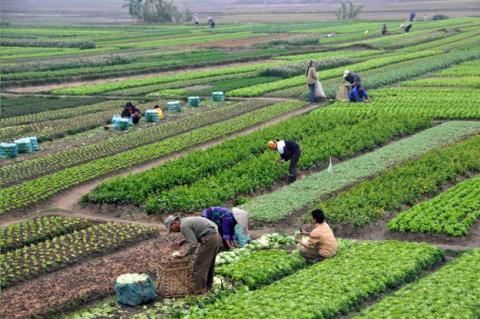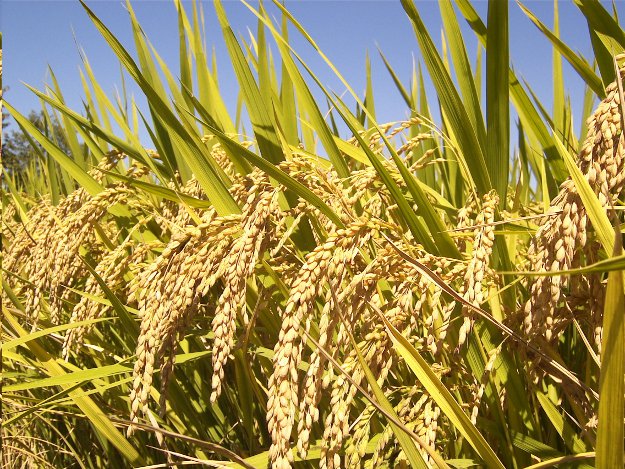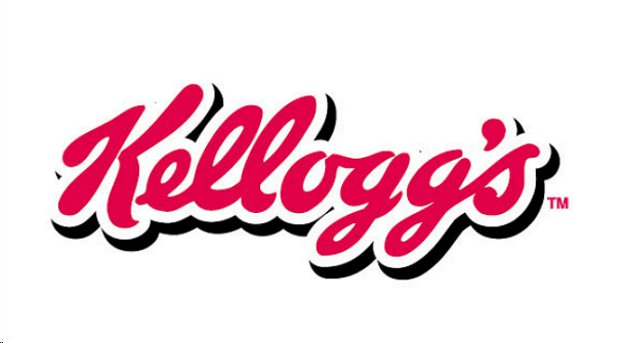Sustainable Agriculture Meets Big Business

Sustainability is infiltrating our national consciousness. These days, the marketing strategy of nearly every iconic American brand – promoting companies like Ford, Marriott, Microsoft and Walmart – seems to include some reference to it. Fortunately, photo-ops with employees dressed in Earth Day T-shirts as they build a garden don’t quite cut it anymore. Rather, sustainability agendas, corporate responsibility reports, corporate sponsorships, green initiatives, sustainability assessments and memberships in a variety of public-private multi-stakeholder initiatives are becoming the norm.
Motivated by pressure from stakeholders as diverse as environmental and human rights groups, activist shareholders, global competitors, affected communities and concerned management, many companies are expanding their sustainability profiles. Consumer demand for more responsible and transparent business practices is also pushing companies ranging from apparel to oil and gas to rethink their priorities.
This shift is clearly evident in the agricultural sector. From the organic, fair-trade and local crazes to the debate over labeling of genetically modified organisms, Americans’ appetite for information on the sources of their food is growing. Inspired by investigative articles, books and documentaries on food production, they want to know how their food is produced and at what costs.
Increasingly, environmental and social costs are a part of that equation, and for good reason.
According to the United Nations, by 2050 there will be an additional 2 billion people on earth. And, as pointed out recently in a NASA-sponsored study, resource exploitation presents significant risks for future generations. The combination of depleted resources, aided by corporate action, and a surging world population underscore the need for improved sustainability efforts.
The agricultural sector, which provides livelihoods for 40 percent of the world population, has an essential role to play. And food and beverage companies looking to beef up their credentials are taking note with a new focus on sustainability.
Sustainable agriculture aims to strike a balance between the current needs of the global population and a viable future for new generations. And it does so by accounting for the whole system involved in food production, including the individual farm, affected communities and local ecosystem. As with sustainability generally, this approach to agriculture seeks to harmonize three factors -- economic profitability, social equity and environmental health. In other words, it focuses on the triple bottom line -- profit, people and the planet.
Environmental health centers on conservation of natural resources like water and soil through a reduction in use and waste. Techniques include restoration of soil through crop rotation, cover crops and minimal tilling, decreased pesticide and synthetic fertilizer use, reduction of use of nonrenewable energy sources, and raising of pasture-raised livestock fed on natural diets. Social equity applies to a wide range of rights covering topics such as safe working conditions, fair wages and property ownership for agricultural workers around the globe.
Economic profitability means ensuring that companies do not sacrifice their financial bottom lines in pursuit of environmental and social goals. The effects of climate change, horrifying accounts of rights violations and environmental degradation, and concerned shareholders have all served as negative catalysts for profitability. In response, corporations are increasingly incentivized to introduce viable sustainability agendas.
***
Companies in the agricultural sector are working on a number of initiatives to demonstrate their dedication to sustainability. Some of the largest food and beverage companies worldwide – like Coca-Cola, Kellogg’s, General Mills, Mars and PepsiCo – have outlined their commitment to practices that include reduction in water use, local sourcing, anti-deforestation and direct investment at the community level.

Progress may come in small steps. These companies still have a long way to go in getting to the bottom of their supply chains, responding to the needs of impacted communities, and ensuring consistency of their sustainability goals across a number of environmental and social causes. But even incremental changes, such as those profiled below, can bend corporate behavior towards more socially responsible conduct.
Reduction in water use. Reduction in water use is, not surprisingly, one area of low hanging fruit. Agriculture consumes approximately 70 percent of the world’s supply of fresh water, and for years many companies did not keep tabs on their water use.
Conservation targets can set realistic, achievable goals and demonstrate results to interested parties. For instance, Coca-Cola has pledged by 2020 to give back to the environment and communities an amount of water equal to what it uses in the production and composition of finished beverages. In its 2013 “Water Stewardship & Replenish Report,” the company estimated that it has already balanced water use for 52 percent of finished beverages.
Of course, companies can also make sweeping commitments to meet targets that are thwarted by their suppliers. Transparency all the way down the supply chain is therefore essential. It also presents one of the biggest challenges for multinationals. For instance, food giant Kellogg’s has committed to reducing water use by 15 to 20 percent by 2015. But global nonprofit Oxfam notes in this year’s “Behind the Brands” scorecard for the 10 largest food and beverage companies worldwide that Kellogg’s targets for reduction in water use have been disrupted by noncompliance along its supply chain.
This is true even though Kellogg’s is transparent about water availability in the places where it operates. The company conducts assessments that shine a spotlight on where its activities intersect with the greatest water-stressed areas worldwide so it can prioritize its efforts.

Another approach is to provide instruction on water conservation practices directly to the growers at the bottom of the supply chain. For instance, General Mills began an initiative in 2008 to cut in half the amount of water used to grow Green Giant cauliflower and broccoli in Central Mexico by teaching growers drip irrigation farming. According to the company, drip irrigation uses approximately half of the amount of water as conventional irrigation. General Mills also gives interest-free loans of up to $200,000 to purchase drip irrigation equipment.
Local sourcing. Another type of corporate initiative in sustainable agriculture is to source locally. This practice can reduce carbon footprints, as well as lower shipping costs and result in fresher products.
For multinational food companies, local often means regional. For instance, Kellogg’s grows and sources a majority of its ingredients in the same country where the food products are manufactured. So all of the corn and rice in its American products are grown domestically, and Australian foods are made with 100 percent of grains grown in Australia. The same is true for wheat in Europe and rice in Columbia.
Some companies are also committed to cultivating indigenous, specialty food crops and incorporating them into their supply chains. Kellogg’s funds a program in Mexico that trains small, local farmers on cultivation of amaranth, a highly nutritious native grain. The company teaches use and sale of the grain in food products. This initiative also provides a sustainable source of income for rural women.
Local sourcing can apply to a number of ingredients contained in one product. To produce Haagen-Dazs ice cream in France, General Mills relies on nearby suppliers of milk, cream, eggs and packaging materials. It also generates nearly all of its fuel to power the boiler used to make milk and cream with discarded woodchips from local forests.
Anti-deforestation. Reduction in deforestation is another area of interest for socially responsible agricultural companies. Traditional harvesting of palm oil – a vegetable oil found in many common snack foods – is a primary cause of deforestation, habitat destruction for endangered species, and carbon dioxide emissions. With sustainable palm oil, companies can lessen their environmental impact.

Many companies ostensibly support anti-deforestation efforts through their memberships in multi-stakeholder initiatives like the approximately 1,300-member Roundtable on Sustainable Palm Oil (RSPO), which promotes sourcing of sustainable palm oil. Food and beverage companies including Mars, General Mills, Kellogg’s and PepsiCo have pledged in the past to purchase certified sustainable palm oil for all of their products by 2015.
Yet, there has been a great deal of criticism regarding the ineffectiveness of the RSPO. In response to negative publicity and a new milestone set by Swiss-based Nestle, which completed a six-month process last year in which it mapped the global supply chain to ensure complete transparency and prevent deforestation among its suppliers, companies like Mars, General Mills and Kellogg’s recently announced similar commitments. These companies have pledged by 2015 to exclusively source palm oil that their suppliers can actually trace back to plantations that do not engage in deforestation.
Direct investment. Some corporations also aim to improve small farmers’ livelihoods and the environment through direct investment. This top-down approach risks failing to align the goals of direct investment with the needs of the recipient communities. The shifting spotlight towards sustainable businesses at the local level, however, is a major step.
Direct investment comes in the form of training, financial support and partnerships. Last year, General Mills launched a four-year long, $1.1 million program in Peru to train small farmers on practices to improve profits and increase yields. Topics covered include crop management, formation of farmer cooperatives, and financial planning. The company will also provide microloans to farmers to purchase shoots and seeds. Earlier in 2013, General Mills launched a two-year long, $125,000 program in Madagascar – the world’s premiere vanilla-growing region – along with supplier partner Virginia Dare and CARE to train vanilla farmers on sustainable farming and value-added production techniques to increase their incomes.

Yet, even with these direct investments, transparency in the supply chain can be difficult. Oxfam’s “Behind the Brands” scorecard gives General Mills a very low score for its treatment of farmers. Although the company supports farmers through programs, it apparently “doesn’t know the number of small-scale producers in its supply chain – and doesn’t ask suppliers to protect farmers’ rights.”
Similarly, in China, PepsiCo operates a handful of demonstration farms that teach cutting-edge crop management, irrigation and fertilization techniques. The purpose of these farms, as part of the company’s Sustainable Farm Initiative, is to help spread these advanced practices across China’s agricultural sector to improve yields and profitability for farmers. Mars is also setting up training centers. Cocoa Development Centers in cocoa-producing regions, as well as Village Cocoa Centers in local communities, train farmers on ways to improve profitability and incorporate sustainable practices.
Direct investment extends to access to technology as well. Earlier this year, PepsiCo, along with corporate partners Unilever and Heineken, launched an online tool that will help individual farmers assess and modify their greenhouse gas emissions. The tool is free for farmers but comes with a fee for suppliers.
***
These initiatives are not a panacea for violations of environmental and social rights by corporations. And to make real progress here management must listen and respond to the communities they seek to serve. Many companies, however, are paying attention to criticism about their environmental and social impacts and aligning with sound practices that extend into the communities impacted by their businesses.
If implemented with input from multiple stakeholders, companies can prevent violations from occurring in the first place. The more work done up front to demonstrate compliance with sustainability goals (or “knowing and showing”), the less time critics will spend “naming and shaming” these companies. And fewer resources will be allocated to remedying situations that could have been avoided with sound, prospective sustainability policies.
Author Bio:
Annie Castellani is a contributing writer at Highbrow Magazine.






























































































































































































































































































































